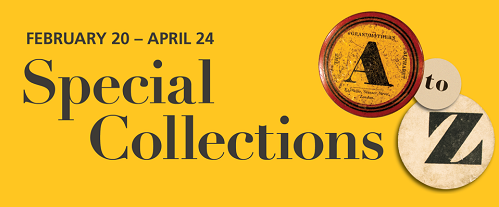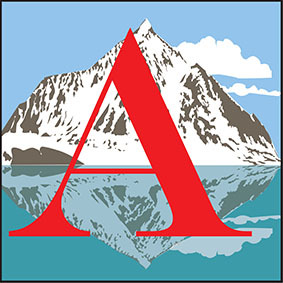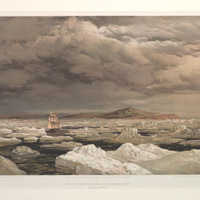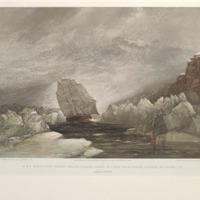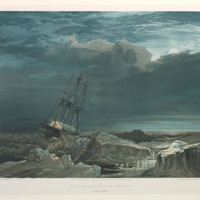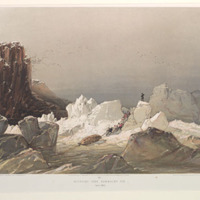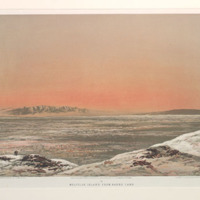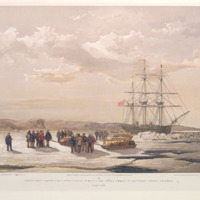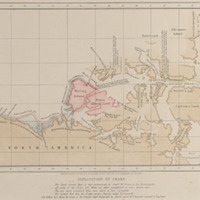A is for Arctic exploration
Beginning in the time of Columbus, Europeans saw the American continent as a barrier between Europe and the lucrative silk and spice trade of the Orient. The search for “the Northwest Passage” — a sea route across the top of the continent — inspired countless expeditions into the uncharted Arctic.
Early voyages were perilous and full of adventure but, ultimately, in vain: a navigable passage was never discovered.
The expeditions did, however, result in the mapping of the Canadian Arctic and in accounts of early contact between Europeans and the Indigenous peoples of the North.
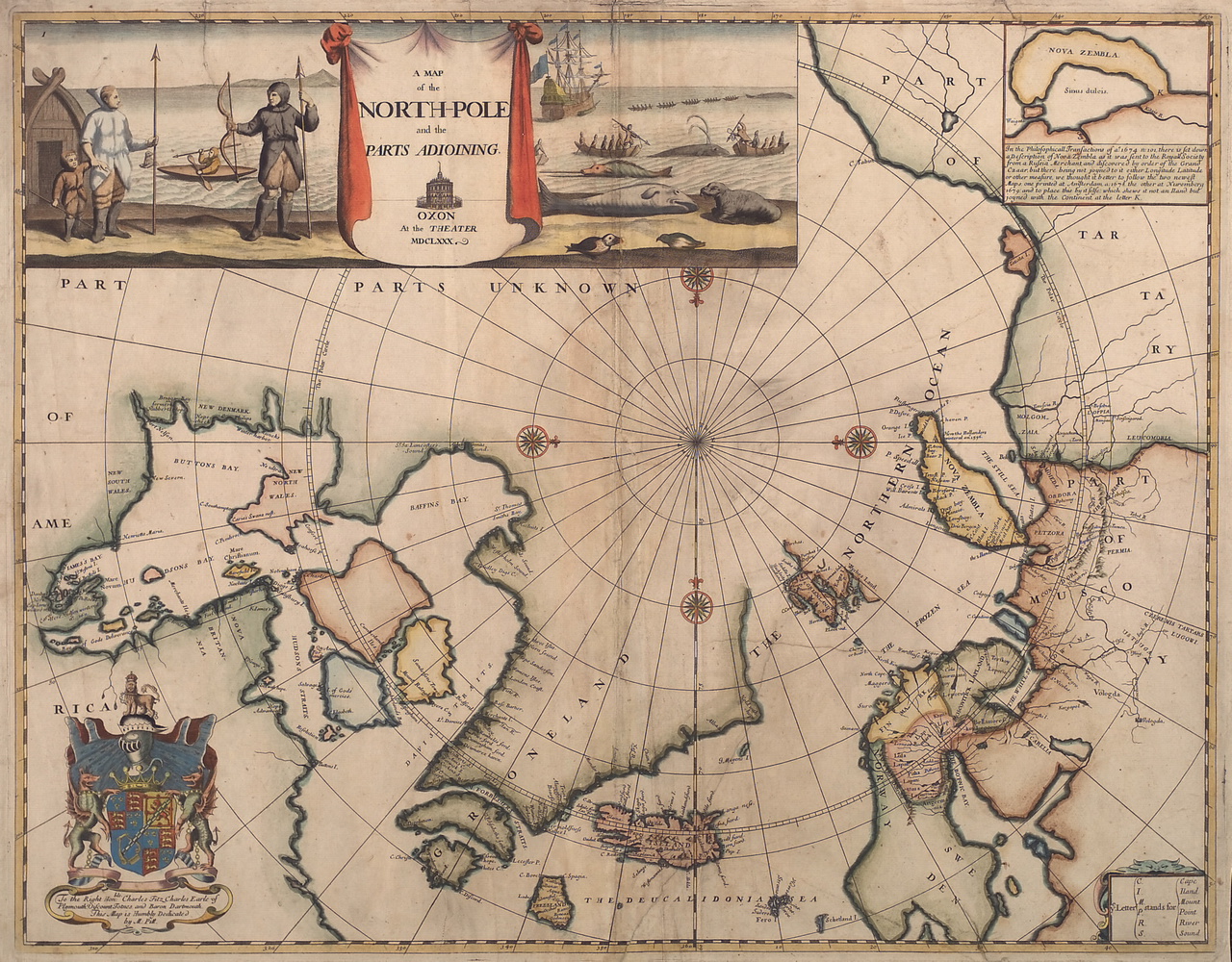
A map of the North-Pole and the parts adjoining
From English Atlas Vol. 1 No. 3
Moses Pitt, 1654-1696
Oxford: 1680
Baldwin Collection of Canadiana
European explorers had begun to map Canada’s eastern shores by the late 16th century. But, a century later, much of Canada’s arctic landscape remained a mystery.
On this map from 1680, everything west of Baffin's Bay and Hudson's Bay is marked as “parts unknown”.
The vignettes at the top of the map depict Inuit spear fishing and a whale hunting expedition.
You can see or download a larger version of this map on the library's Digital Archive.
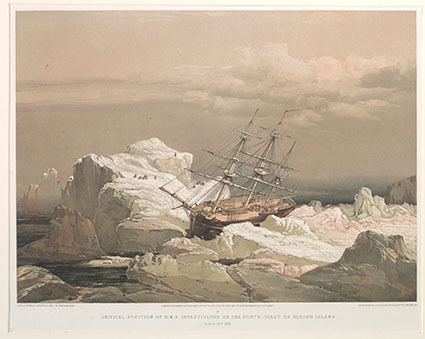
First discovery of land by H.M.S. Investigator (Plate II)
From A series of eight sketches in colour of the voyage of H.M.S. Investigator during the discovery of the North-west passage
S. Gurney Cresswell, 1827-1867
London: Day & Son, 1854
Baldwin Collection of Canadiana
Cresswell accompanied Robert McClure on his expedition to the Arctic and documented the journey in a series of watercolour sketches. These were later printed and hand-coloured.
This print documents the expedition’s first discovery.
Bank’s Island had been seen in the distance by Sir William Edward Parry in 1820, but McClure’s expedition reached it and claimed it for Queen Victoria in 1850. McClure’s map records the name as Baring’s Island.
Read the book online or download it from our Digital Archive.
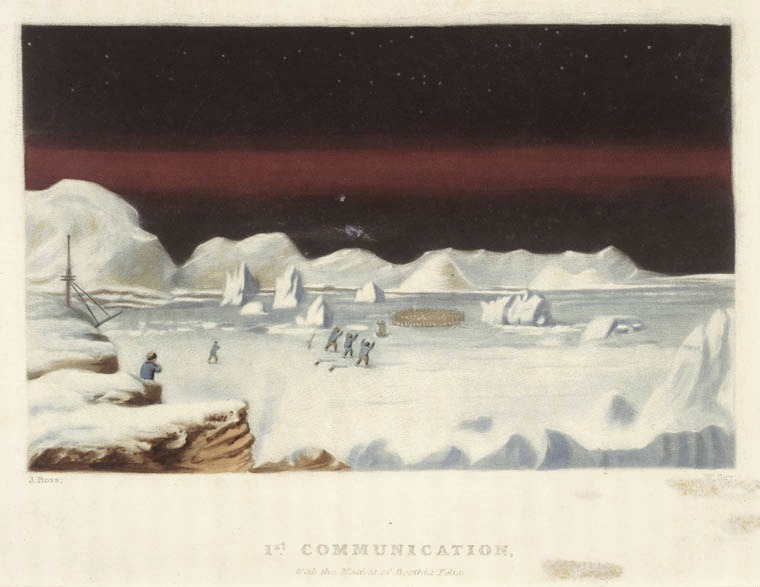
First Communication with the natives of Boothia Felix
From Narrative of a second voyage in search of a North-West Passage
Sir John Ross, 1777-1856
London: A.W. Webster, 1835
Baldwin Collection of Canadiana
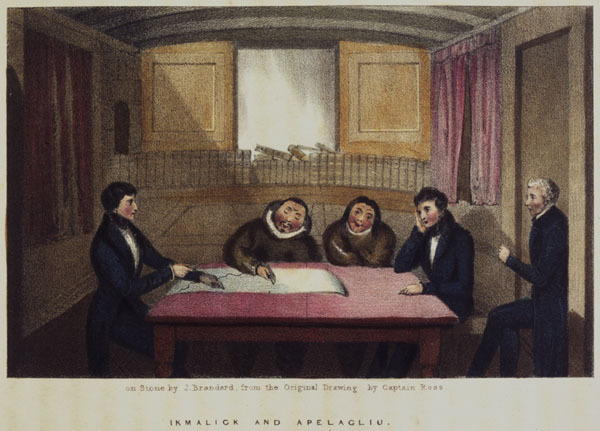
Ikmalick & Apelagliu
From Narrative of a second voyage in search of a North-West Passage
Sir John Ross, 1777-1856
London: A.W. Webster, 1835
Baldwin Collection of Canadiana
On his second voyage to the arctic, John Ross’s ship got stuck in the ice off Prince William Island. After four years, the expedition trekked overland to Prince Regent Inlet where they were rescued by the whaling ship Isabella.
According to Ross’s account, when his party encountered a group of Inuit, they threw down their guns and raised their hands in the air as a sign of good will. The Inuit then threw down their knives and spears and raised their hands in the air.
Two Inuit men, Ikmalick and Apelagliu, were invited on board Ross’s ship, the Victoria, and contributed additional details to the territory mapped by the expedition.
Read the book online or download it from our Digital Archive.
Explore more!
Discover more in our past virtual exhibits: Magnetic North, and Frozen Ocean: Search for the North-West Passage or by searching our Digital Archive.
